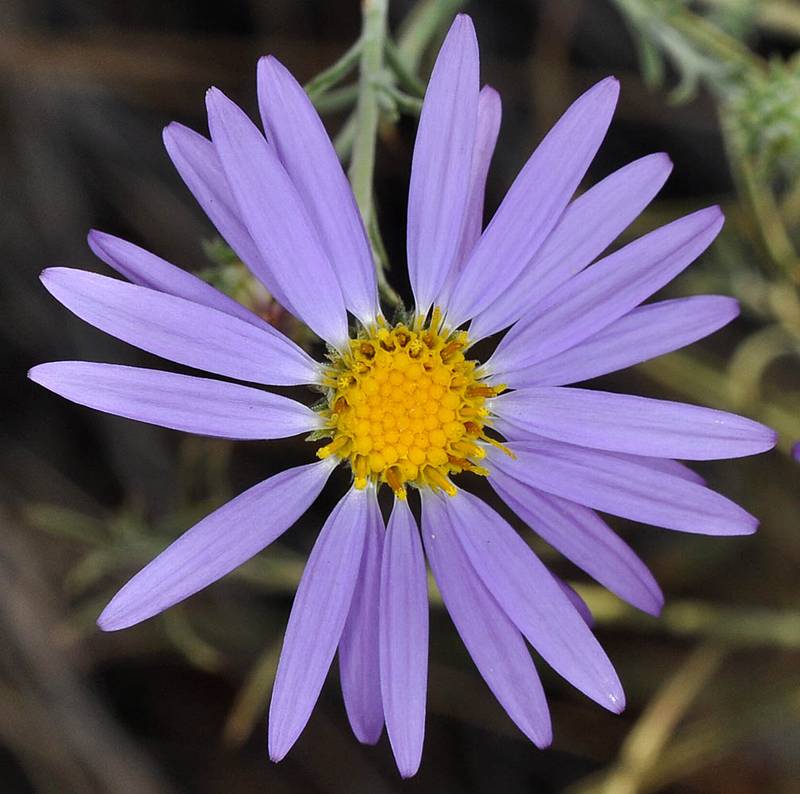Dieteria canescens
hoary-aster
Basal leaves linear-oblanceolate to spatulate, up to 10 cm. long including the petiole, and 15 mm. wide, often deciduous;
cauline leaves smaller, linear; all leaves toothed, the teeth tipped with small spines.
Heads fairly numerous in an open inflorescence;
involucre 6-10 mm. high, often glandular, its bracts imbricate and narrow, papery, except the tip green and sharply recurved;
rays 8-25, bright bluish-purple, 5-12 mm. long;
pappus of capillary bristles.
Achenes 3-4 mm. long, several-nerved.
Dieteria canescens
Occurring east of the Cascades crest in Washington; southern British Columbia to southern California, east to the Great Plains.
- Local floras:
BC,
CA,
OR,
WA
- Local Web sites:
CalFlora,
CalPhotos,
Flora NW,
PNW Herbaria
WildflowerSearch
iNaturalist (observations)
USDA Plants Database
- LBJ Wildflower Center
- SEINet
- Plants of the World Online
- Encyclopedia of Life
- Wikipedia
- Google Image Search


